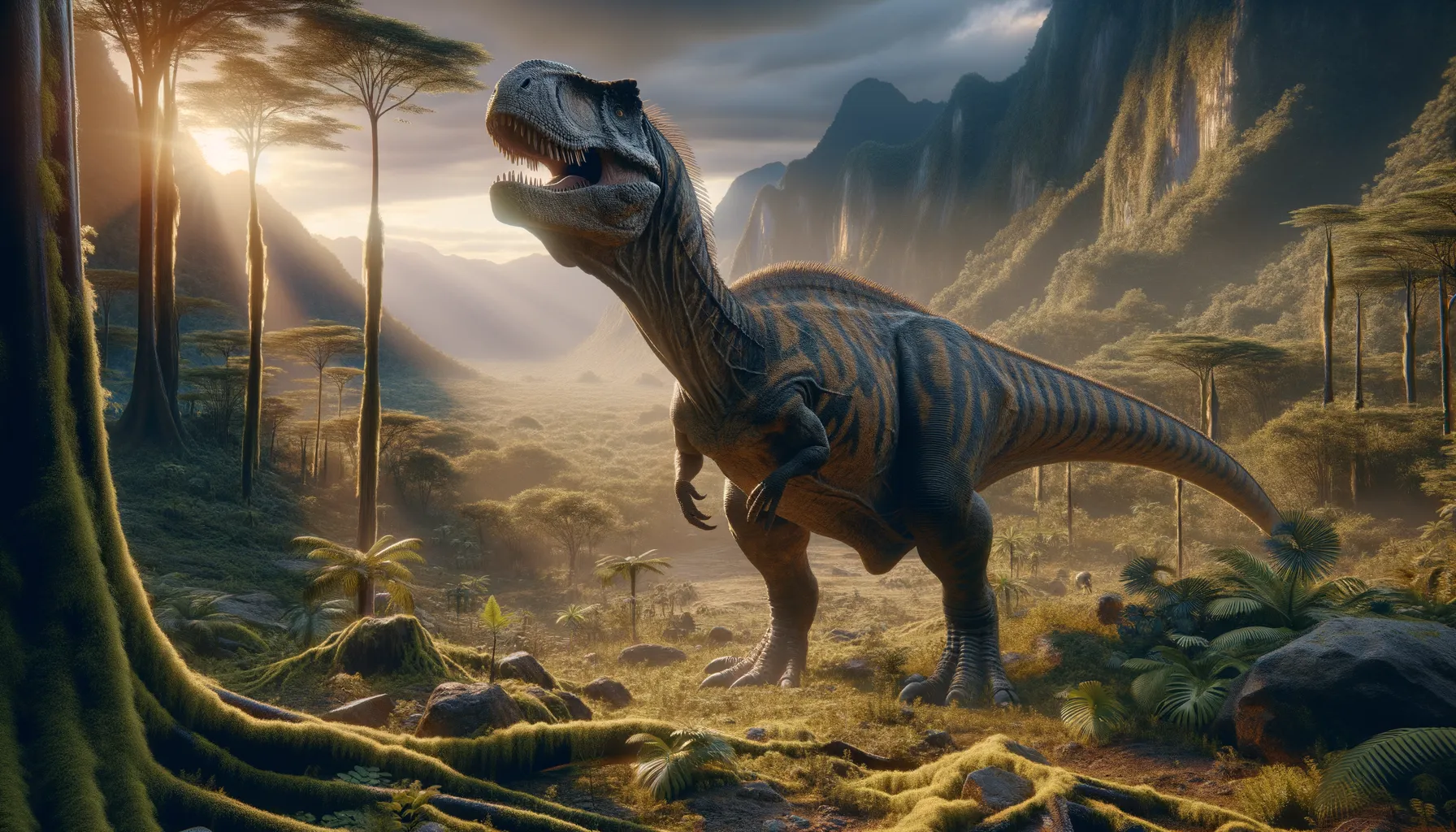
Petrobrasaurus
A gentle giant from the ancient world.
Period
Cretaceous
Length
Around 60 feet from head to tail.
Height
Approximately 15 feet at the shoulder.
Weight
Estimated at up to 20 tons.
Petrobrasaurus was a large herbivorous dinosaur belonging to the titanosaur family, which roamed the Earth during the Late Cretaceous period. Its fossils were initially discovered in Argentina, providing insights into the diverse ecosystems of prehistoric South America. As a ground-shaking giant, it played a crucial role in its ecosystem, likely influencing the vegetation structure due to its grazing habits.
Diet
Petrobrasaurus fed primarily on plants, such as ferns and conifers. Its long neck likely helped it reach high foliage and sweep the ground for low-lying vegetation.
Hunting
As a herbivore, Petrobrasaurus did not hunt for food. Its enormous size likely deterred predators, allowing it to feed peacefully.
Environmental challenges
Petrobrasaurus faced challenges such as changes in climate and vegetation patterns. It likely had to adapt to shifting plant availability and water sources. Predation by carnivorous dinosaurs may have been a threat to its young, necessitating protective behaviors by adults.
Speed
Likely slow-moving due to massive size.
Lifespan
Estimated to live several decades.
First discovery
First discovered in Argentina in 2007.
Fun Facts
- Petrobrasaurus was a long-necked dinosaur that lived during the Late Cretaceous period, roughly 80 million years ago.
- This dinosaur belonged to the group known as sauropods, which were famous for their enormous size and long necks.
- Petrobrasaurus was discovered in Patagonia, Argentina, an area known for its rich fossil discoveries.
- Unlike the towering giants like Brachiosaurus, Petrobrasaurus was relatively smaller, though still impressive in size.
- Its name, Petrobrasaurus, was inspired by the Petrobras oil company, which supported the research leading to its discovery.
- Fossils of Petrobrasaurus help scientists understand the diverse range of sauropods that populated South America during the Cretaceous period.
- Petrobrasaurus had peg-like teeth, which were perfect for stripping leaves from trees, its primary diet.
Growth and Development
Petrobrasaurus experienced swift growth during its juvenile years, a trait common in many large herbivorous dinosaurs. It would reach maturity in several decades, developing into its full massive size. The growth rate ensured its survival in a predatory and competitive environment.
Habitat
This giant lived in regions that were once vast floodplains, providing ample plant life. Its habitat included areas rich in water sources, which were essential for its survival. A varied geography also supported a diverse community of contemporaneous dinosaur species.
Interaction with other species
Petrobrasaurus likely coexisted with other herbivorous and carnivorous dinosaurs, sharing its environment. Its social interactions might have included herding to protect young individuals. Competition for food could have led to certain adaptive behaviors.
Natural lifespan
Petrobrasaurus had a natural lifespan of several decades.
Reproduction
Reproduction likely involved laying eggs in nests, similar to other sauropods. The survival of hatchlings may have been supported by group protection, where adults kept a vigilant eye on the young.
Social behaviour
Petrobrasaurus may have lived in groups, finding safety in numbers. Such social structures could have provided protection against predators, ensuring the survival of their species.
Fossil locations
Fossil remains of Petrobrasaurus have been found in Patagonia, Argentina. These fossils contribute to our understanding of the distribution of Cretaceous titanosaurs in South America.
